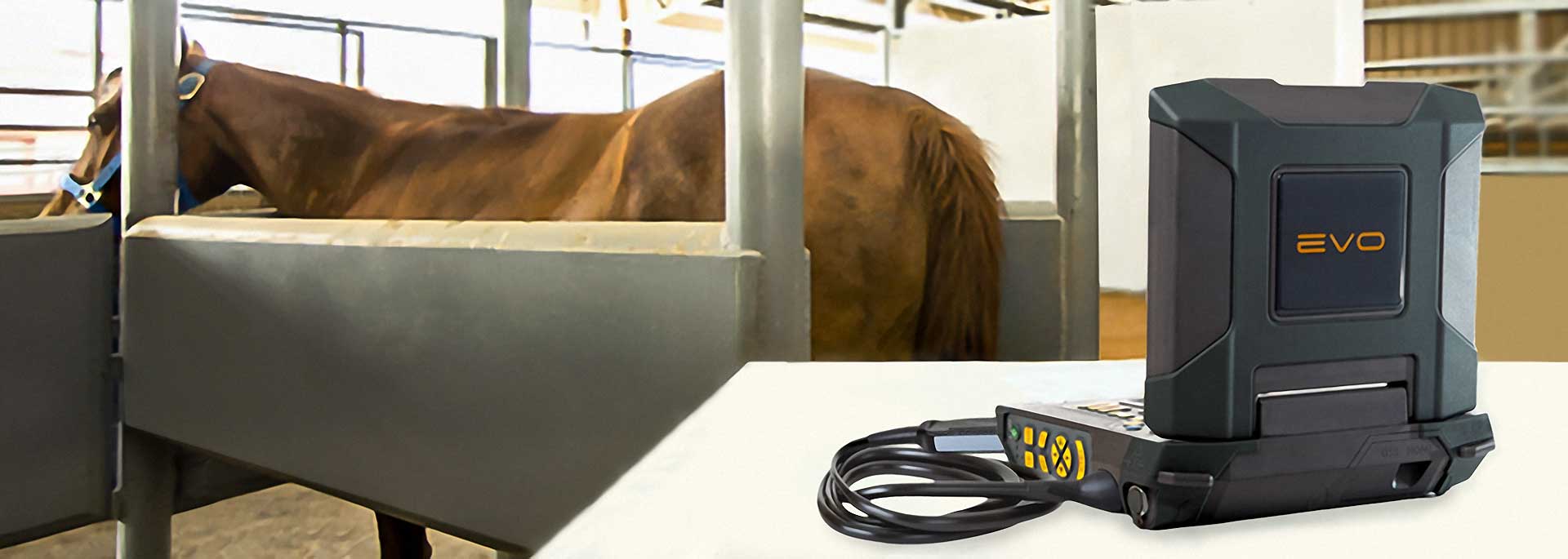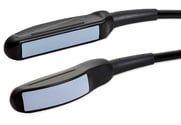 The flat linear rectal transducer has been the standard for large animal reproductive ultrasound for a very long time. You may have noticed that in recent years, however, many folks have started to use a rectal probe with a curved array. What’s the difference, and why might you choose one over the other?
The flat linear rectal transducer has been the standard for large animal reproductive ultrasound for a very long time. You may have noticed that in recent years, however, many folks have started to use a rectal probe with a curved array. What’s the difference, and why might you choose one over the other?
The difference in the two probe option boils down to the field of view, and we will use the EVO’s eL7 transducer as an example. By nature of its shape, the linear rectal probe produces a square- to rectangular-shaped image. By nature of its frequency range (5-9MHz), it penetrates about 15cm below the surface.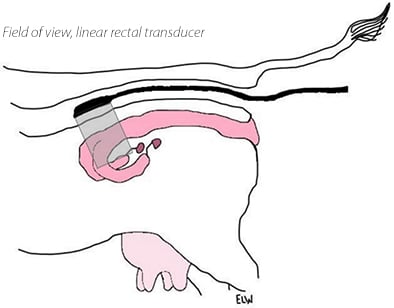
In contrast, the curved shape of the array on the eCLi4 produces a wedge-shaped image (a wider field of view), and the lower frequency range (3-7MHz) means that it penetrates much deeper into the tissue, imaging up to 24cm.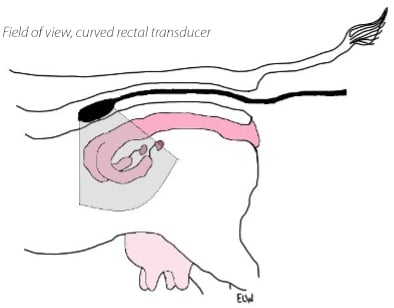
So deeper and wider must be better, right? Why limit yourself to a smaller image slice? Well, that’s not necessarily the way to look at it.
Benefits of the Linear Rectal Transducer
Because the flat linear probe has a smaller field of view, structures within that imaging plane will appear larger on the screen. Its image stays more consistent and with less distortion as it reaches the far field, where the sound waves of a curved probe fan further apart and lateral resolution is impaired. In addition, the higher frequency range of the linear probe simply produces a higher resolution image. Therefore, the linear rectal probe is a better choice for examining smaller, shallower structures like earlier pregnancies and ovaries with the finest detail possible. It’s also the best choice for scanning foal and calf lungs, as the pleural surface is quite shallow and the flat transducer makes the best contact in the intercostal spaces.
Example of Linear Probe Study
Benefits of the Curved Rectal Transducer
The curved rectal probe was born from the need to examine later stages of pregnancy, when the linear probe simply can’t image deep enough. The wide field of view and low frequency allow us to take in a much broader view of the reproductive tract, visualizing larger fetuses. The array (the imaging face) of this probe was borrowed from a macroconvex transabdominal probe, so the CLi offers the benefit of acting as a bit of a hybrid; the ergonomics are different than a classic abdominal probe, but it can function to serve both transrectal and transabdominal purposes. In addition, the curved face makes inherently better contact with the rectal mucosa, making it a great choice for use in the ICE arm-free device. Very little pressure or leverage is necessary to eliminate air and produce a consistent image when the ICE and CLi are coupled.
CLi (curved rectal) probe in the ICE handle. The convex face of the probe makes easy contact with
the rectal mucosa when the operator's arm is not immediately present to apply downward pressure.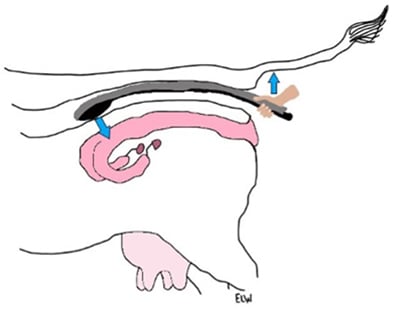
CLi Study Showing Larger Fetus
The Bottom Line: Which One is Best for Me?
Ultimately, the linear rectal probe is a better choice for those who prioritize image quality over depth of penetration. It is the superior option for examining ovaries, early pregnancies, and producing beautiful images for fetal gender determination in the classic 60-80 day window. A practitioner who wants to scan the occasional distal limb on a horse but can’t justify the purchase of a tendon probe will get by with a linear rectal probe for that purpose; a CLi would never suffice. Typical scenarios for a linear rectal probe include dairy and equine reproduction, foal and calf lung screening, and transrectal applications in smaller species such as deer, camelids, and small ruminants, where the physical size of the transducer head are a consideration.
The curved rectal probe is ideal for beef operations, where the scanner might want to see as much of a later term pregnancy as possible. It allows for fetal aging and sexing later than the linear probe will, and is ideal for use in the ICE handle, which is a favorite among beef practitioners and producers. It’s also a great choice for a mixed large animal veterinarian who regularly conducts pregnancy exams on both cattle and small ruminants, camelids, or swine and only wants to invest in a single probe for both transrectal and transabdominal use. Niche applications for the CLi and ICE combo exist in zoos and aquatics as well, including reproduction in elephants and sharks.
For mixed practices seeing a larger variety (Equine, beef, dairy, and other large animal species), think about your priorities to determine which one suits the majority of your needs… or if it’s justified, consider having both so that you always have the right tool for the job!
As always, contact us for more information or to chat with a sales representative about what system and configuration is best for your individual situation!

Dr. Wierman is Staff Veterinarian
and Director of Education for
E.I. Medical Imaging
Follow Dr. Wierman on
Instagram @Dr.Wierman








